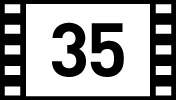

After the success of their critically acclaimed 2017 crime thriller Good Time, the Safdie brothers (The Pleasure of Being Robbed, Daddy Longlegs, Heaven Knows What) got to make their long-gestating dream project Uncut Gems, which takes place in the manic, high-stakes milieu of Manhattan’s Diamond District where their father once worked. Adam Sandler stars as a gambling-addicted New York jewelry store owner named Howard Ratner. Juggling his crumbling marriage, his responsibilities to his teenage children, a hard-partying mistress he can’t keep up with, and long fed-up loan sharks to whom he owes money, Howard is always on the lookout for the next big score that will solve all his problems.
Uncut Gems is a character study that viscerally places the viewer into the chaos and anxiety its protagonist seems to crave. Howard is an adrenaline junky, and it’s not exactly an enjoyable ride spending 135 minutes with this guy. But the film is excitingly produced and executed. The sibling directors have a distinctive style and they know how to use it for maximum effect. Intermingling movie stars and non-actors, sets and locations, 35mm and digital photography, every aspect of the picture fits together seamlessly.
Compositionally, a controlled mix of zooms, tracking shots, and handheld work—mostly with telephoto lenses—follow the action with constant motion. But this is not one of those lazy movies where a filmmaker creates an empty, dissipating feeling of anxiety by just waving the camera around with no rhyme or reason. Each scene is shot is subtly different styles that capture Howard’s state of mind at each given time, or, more specifically, how he feels when interacting with different people or in different spaces. Each scene builds in a fashion that keeps us locked into the overall narrative despite how little room there is to catch our breath.
Much of the action takes place inside Howard’s Diamond District jewelry store—one of those claustrophobic, garishly lit little establishments with glass and gems all around. It’s not an environment most folks would want to spend the majority of their time in, and we wonder what effect being cooped up in a bedazzled cage like this does to a person—or what kind of person is drawn to spend their time here.
Production designer Sam Lisenco (Gimme the Loot, Mistress America, Eighth Grade) captures the feel of each environment, from the 47th St. showrooms to Howard’s fancy apartment, to the well-appointed homes of his family. Cinematographer Darius Khondji (Se7en, Midnight In Paris, The Immigrant) creates a gritty, realistic look of everyday New York, shooting with anamorphic lenses that oddly, and appropriately, magnify the actors’ faces in close-ups.
The fantastic cast includes Idina Menzel as Howard's wife, Judd Hirsch as Howard's father-in-law, and Lakeith Stanfield as Howard's assistant Demany, who recruits potential customers for Howard. Much of the action in this story is instigated when Demany brings big-name basketball player Kevin Garnett, a power forward for the Boston Celtics, to the shop to buy jewelry. Garnett becomes obsessed with a rare and valuable black opal embedded in a piece of rock that Howard plans to auction off. The tension around this uncut gem drives much of the narrative.
Garnett’s substantial role requires him to play a range of emotions, which the now-retired NBA star handles with aplomb. Two other first time actors, not playing themselves, also make killer débuts here—Keith Williams Richards as a frustrated, quick-tempered thug, and former model, photographer, documentarian, and dominatrix Julia Fox as Howard's girlfriend and employee. Fox brings a tremendous amount of warmth and sensitivity to the type of role that is typically written and played as a two-dimensional sexy-but-bitchy obstacle. But Fox is practically this film’s emotional center.
In the small but pivotal role of a loan shark hunting Howard down for long-overdue payments, the great actor, playwright, and monologist Eric Bogosian, gets one of his best screen roles. With a short amount of screen time Bogosian’s Arno transforms before our eyes. First, he’s a tough as nails bookmaker who wields tremendous power, then we discover he’s Howard's brother in law and see him in an entirely different context during a family Seder, ultimately he’s revealed to be, like Howard, a man in over his head. It’s one of Bogosian’s most subtle turns and is one of those tiny roles that’s nonetheless worthy of a Best Supporting Actor nomination.
But the film belongs to Sandler. Though the actor is best known for broad, intentionally moronic comedies he’s also co-written like Billy Madison (1995), The Wedding Singer (1998), and Jack and Jill (2011), he’s proven himself to be a fine actor in prestige pictures like Punch-Drunk Love (2002), Spanglish (2004), Funny People (2009), and The Meyerowitz Stories (New and Selected) (2017). The role of Howard feels tailor-made for Sandler’s specific talents. The smiling, motor-mouth Howard always seems focused like a lazar on the person he’s talking to in the present moment, while simultaneously scanning the room for what else his happening and also planning and envisioning future events in his mind. He’s an infuriating, neurotic, desperate little man, yet he maintains a certain charisma and we get locked into his breathless, exhilarating journey somehow wanting very much for him to succeed.
Sandler completely inhabits this character without any
mugging, winking, or display of vanity—and without every accidentally giving us
the impression that we’re watching the well-known persona of Adam Sandler.
Between him, the superb supporting cast, and the sharp skills of their behind the
scenes collaborators, the Safdies capture the thrill and the despair of a life
constantly lived on the edge. They’ve also made a terrifically raw, authentic, street-smart
New York movie reminiscent of the late ‘70s early ‘80s work of Martin Scorsese,
James Toback, and Abel Ferrara. Uncut
Gems may not have the emotional depth of the best work of those poets of
profane, urban, white male brutality, but it has a lot more heart.




